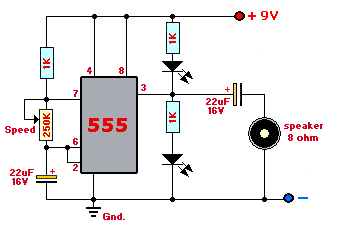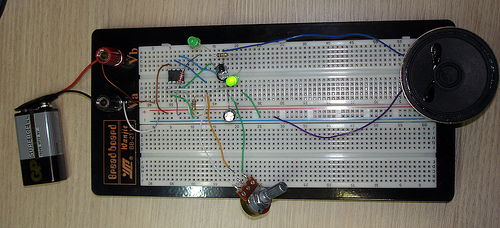Engineering your mind in electronic inventions is not everyone’s cup of tea but a born enthusiast cannot ignore its guts for a long period. Dansku or Daniel Andrade in his recent post has detailed about its unsurpassed urge to create DIY projects while pursuing electric engineering. In this simple project, Daniel has shared a blog that defines how to shape a metronome via some simple parts, which are readily available in any electronic shop.
To begin with, a Metronome is any device that generates a structured audible and visual pulse, habitually utilized to create a stable beat, or tempo and computed in beats-per-minute (BPM) for the execution of musical compositions. For this project, the material required are 555 IC, 3x 1K Ohm Resistor, 2x 22uF 16V Capacitor, 9V Battery, 8 Ohms Speaker and 250K Ohms Potentiometer.
Depending upon the material to be used for assembling the parts, the tools are decided. Here, the complete project is assembled in a Breadboard. In the amended version, the metronome will be on a small board, which will be soldered by means of some TIN and a Soldering Iron.
As far as the scheme is concerned, you have to follow the given scheme in order to build your metronome.

DIY Metronome Circuit (Image Courtesy: www.danielandrade.net)
Though the circuit build here is complete but not really fascinating. You have to wait for the amended version when it will be assembled in a red boar and updated to a beautiful version.

DIY Metronome Device (Image Courtesy: www.danielandrade.net)
The real pleasure is believed to be experienced after a dedicated assembly of materials. After a successful assembling, turn on your circuit and then you will see and hear the beats. You can fix different speeds by changing the resistance from the 250K potentiometer. It’s time to grab your guitar, or any musical instrument and go practice with your new metronome. For more pictures and videos, visit the following link.
Filed Under: Reviews


Questions related to this article?
👉Ask and discuss on EDAboard.com and Electro-Tech-Online.com forums.
Tell Us What You Think!!
You must be logged in to post a comment.